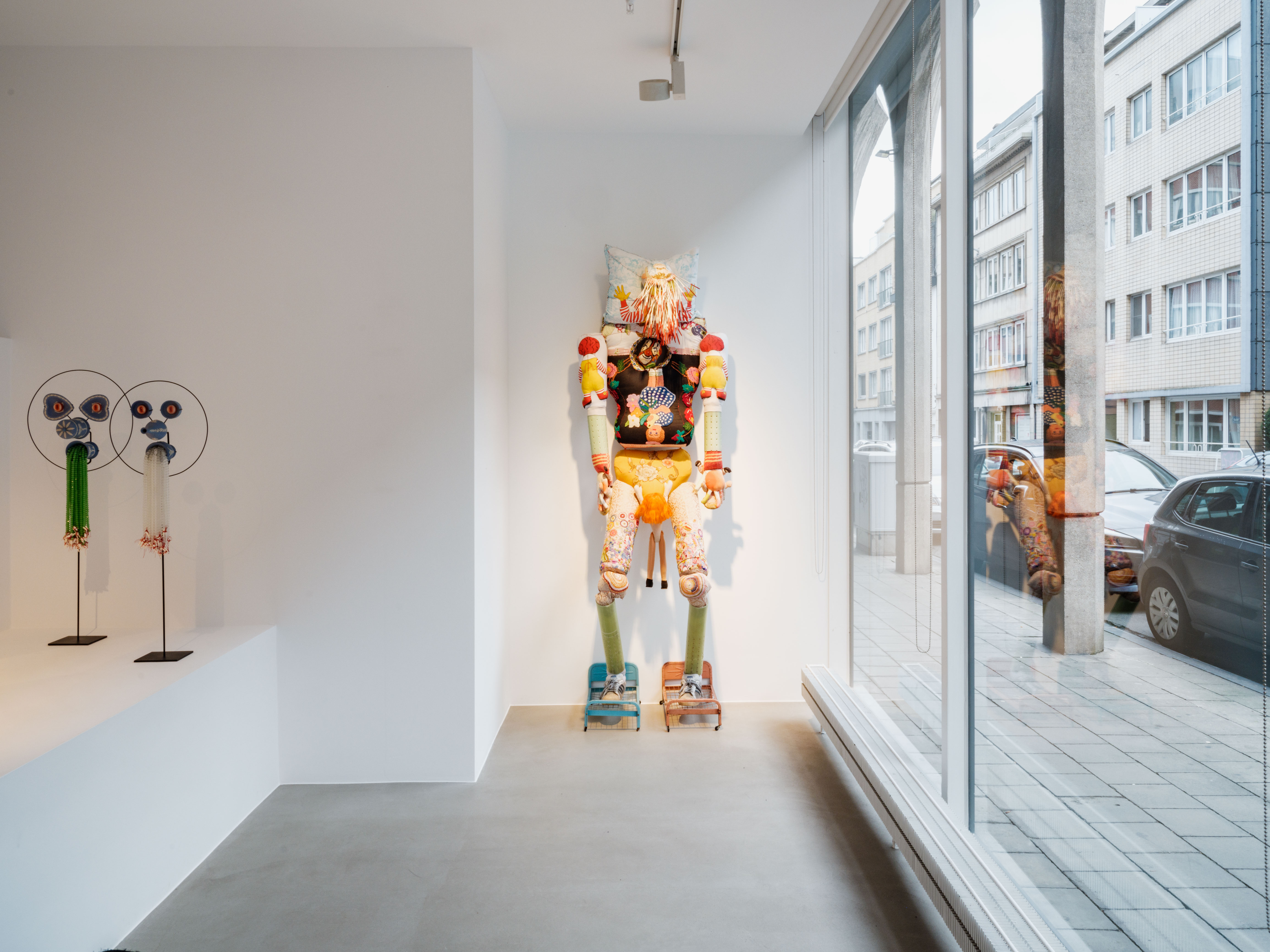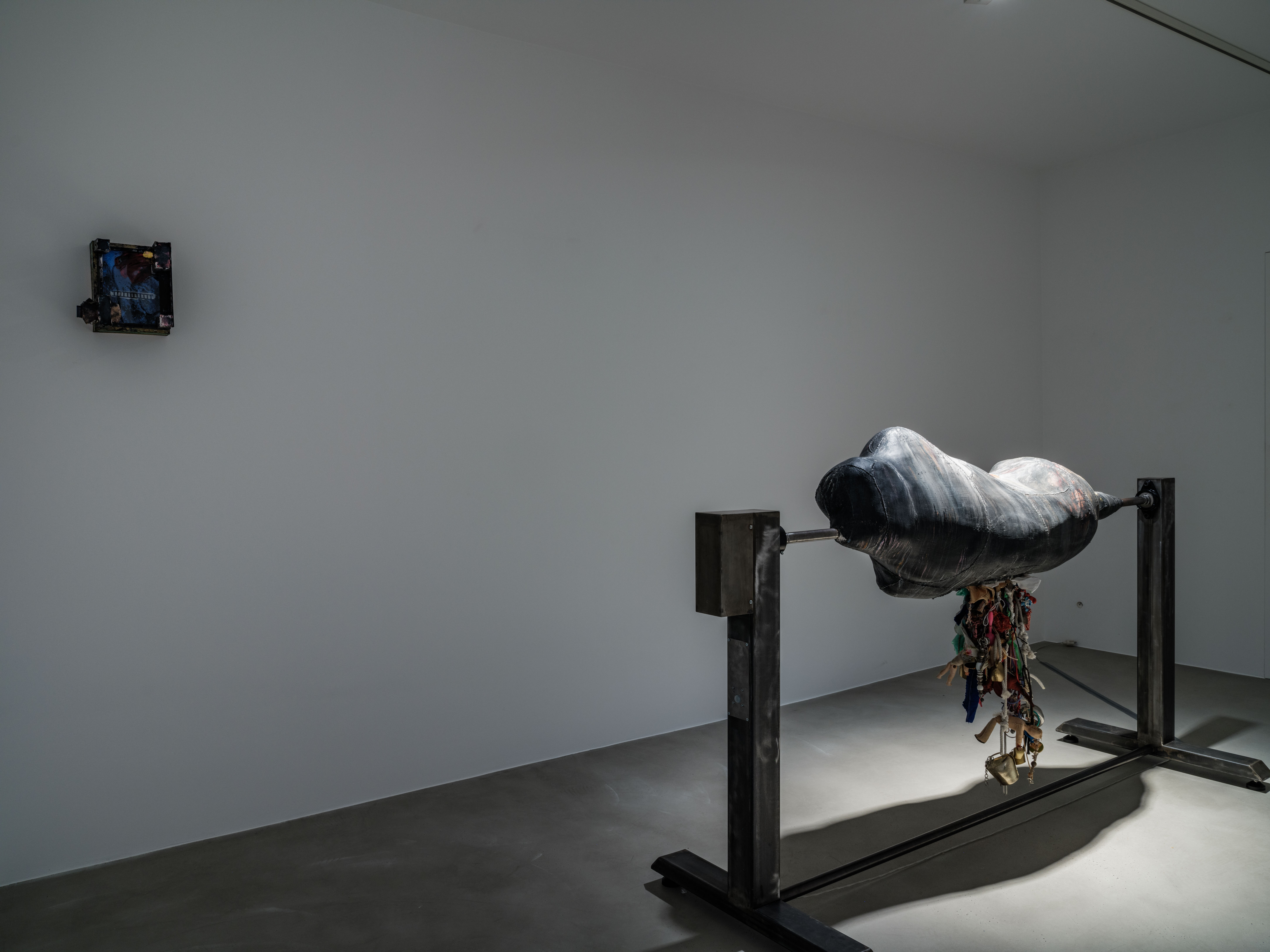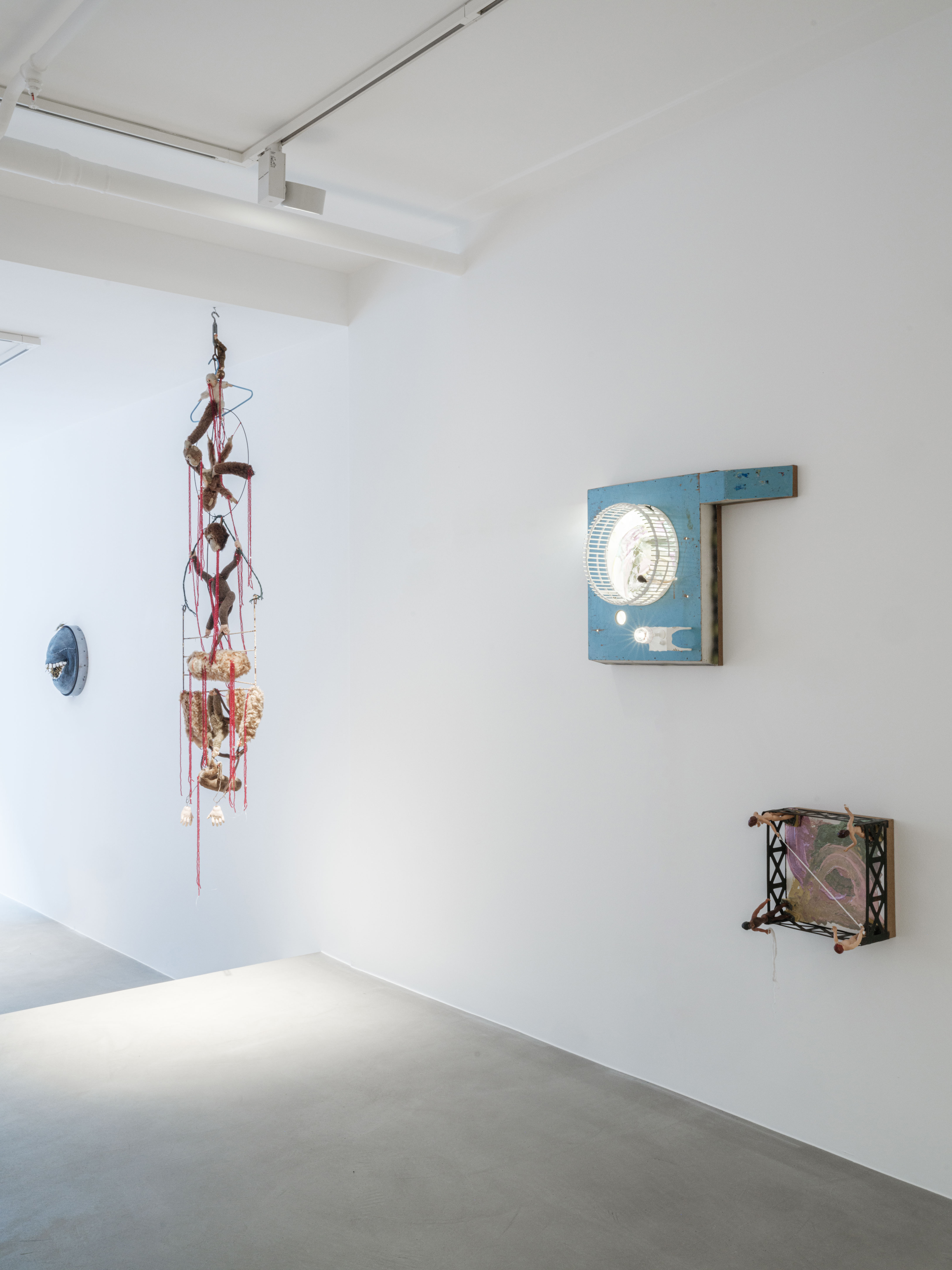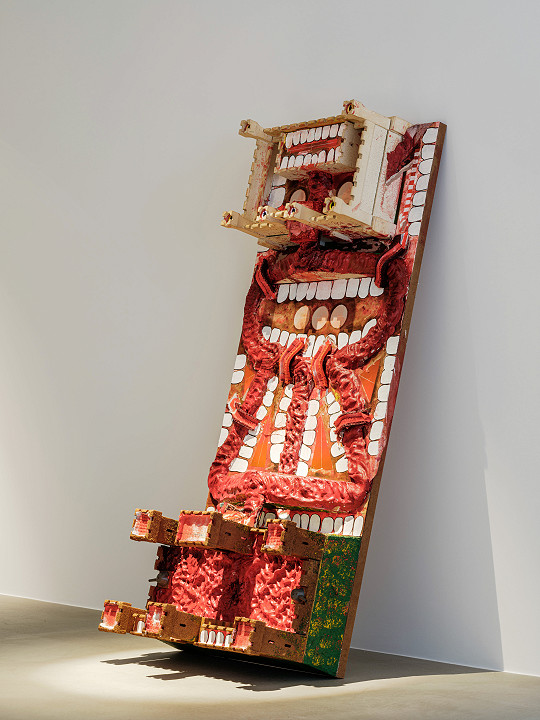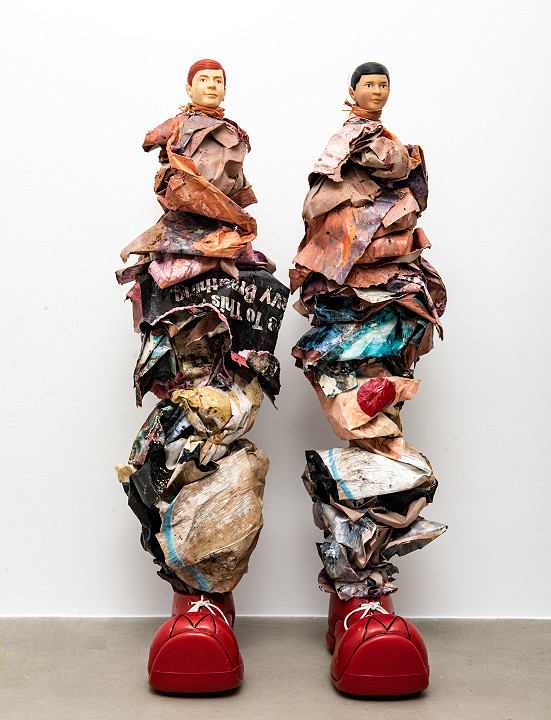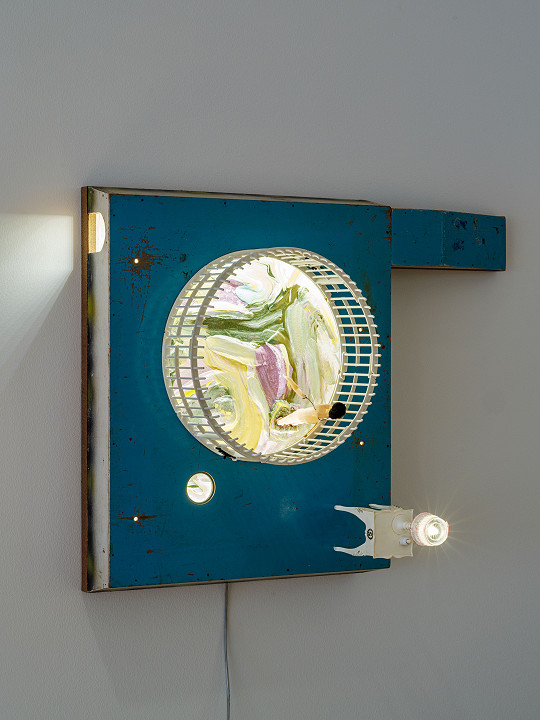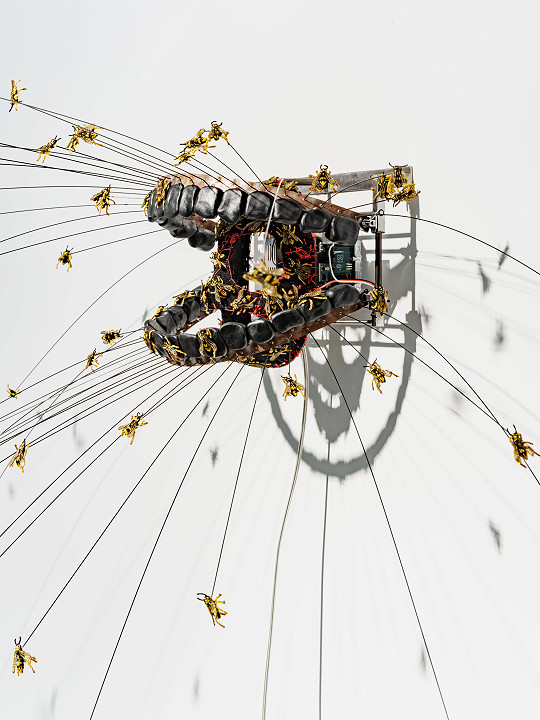Tables full of dolls, castles, miniature furniture, gnomes, Ken wearing nothing but his underwear, a glittery bear, a mountain of monkeys, a small crystal ball… When Christophe Coppens swings the door open generously, toys tumble towards you. Everything is seemingly haphazardly displayed on large wooden tables. Throughout this somewhat dilapidated wonderland, organic treasures like branches and stones are also intertwined, sometimes treated with glaze, plaster or clay. Two discarded washing-up sponges lie proudly in the corner. The avalanche of references, textures, and sensory stimuli grab the viewer by the throat. ‘These are my sketchbooks’, the artist clarifies. It is the overwhelming stream of consciousness with which he builds his camp. Let the game begin.
Coppens reinvents discarded and lost objects in associative compositions that drift between the grotesque carnivalesque and pure Zen. Fragments of wooden castles are transformed into new shapes and contain drawings, notes, and (treasure) maps. Gaping mouths, streams of blood, fake party noses, and absurd kinetic interventions unlock the folly of growing up. Through Playdate, the artist takes you to a former hideout, his old playroom. His childhood is a recurring theme for the artist, but never before has he focussed so radically on the days when he could still go and retreat carefree while the world outside rushed by. The toys hold the framework for the false-or-not memory. Averse to nostalgia, he handles the materiality and energy of his found and collected objects, in order to compose them into a story about the present. He appropriates the mementos hidden in the cemetery of abandoned toys into universal stories about life, lust, and love. They become impressive bas-reliefs that hover between magnificent and monstrous, between hilarious and deadly serious.
Capturing the energy of play is poignantly intense in Coppens' universe. His spiritual poetry is compelling yet elusive. Brutal social criticism is equally as present as it is absent. Simultaneously sweet and aggressive, the artist intuitively depicts the surrealistic paradox of everyday life. Hilma af Klint and Mike Kelley on a date. In Kelley's More Love Hours Than Can Ever Be Repaid and the Wages of Sin (1987), this American artist uses a chaotic collection of handmade teddy bears to point out the many hours of love that have crept into its creation, and the heavy burden of the impossibility and ingratitude of giving or getting enough in return. Coppens is familiar with this kind of “love hours” in all its facets. They swirl through his oeuvre like an enchanting and suffocating bulk of affection. American art critic Jerry Saltz calls the new stream of artworks that stem from mountains of found objects as “clusterfuck esthetics”. He says that ‘(...) this all-at-once gambit can be seen as a way to compete with the paranoia and havoc of everyday life; a homoeopathic dose of poison whereby ruins are created to counteract ruin; a manic-depressive panic attack in the face of information overload (...)’ Coppens’ work exists in line with this vision, and stings just as hard as the wasps buzzing around. ‘Everyone immediately starts knocking on it’, the artist says as he illustrates his love for the insect, after which he evokes an image of the convulsing, drowning mass in a wasp trap. His marvel at the power and splendour of this tiny creature that is capable of so much panic, is as great as his fascination with its gruesome demise. Coppens is a master of creating metaphors brimmed with connective meanings, and the medium is subservient to it.
Acting, directing, costumes, sets, accessories, household goods and opera, installations and performances, paintings weathered by the elements. Coppens continuously creates images. The dramaturgy and theatricality are razor sharp. ‘“Kitsch” is a word for people without any imagination’, he says. The artist creates his own boundaries. Handiwork full of craftsmanship is for fashion: ‘In my visual work I sew like a butcher or surgeon.’ Though Coppens attacked a canvas for the first time years ago already with needle and thread to desecrate it and to get rid of the sacred feeling of fear. In his overview Homework, the volume Home is reserved for his visual arts, and Work for fashion. The fact that the first subject shows Love Me on the cover and the second Feed Me says it all. Coppens claims to leave beauty behind in the fashion world, but horribly beautiful is also beautiful.
